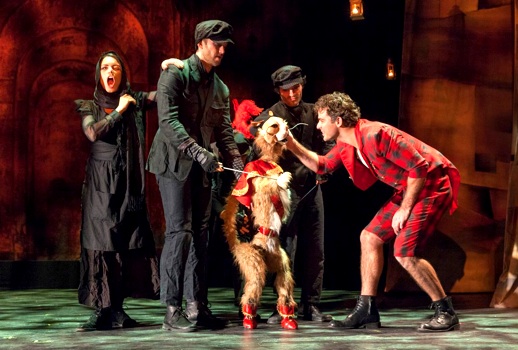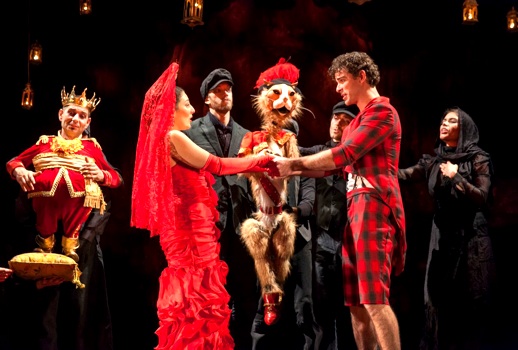

El Gato con Botas (1947), the first of his three operas, is a Perreault fairy story (“Puss in Boots”), set to a sly, melodious, sophisticated score that runs about seventy minutes, containing much to charm adults and nothing to bewilder children. The peripatetic Gotham Chamber Opera presented it at the New Victory Theater, in 2010, in a superb, hilarious production by Moisés Kaufman that mingled puppetry, scenic whimsy and elegant music-making, and it was, for me, one occasion when this quirky little company (but it’s done that more than once, actually) achieved its highest artistic and entertainment aims. The only sadness was that the production did not travel around the nation and the world, delighting adults and enthralling youngsters, especially those ignorant (as I suspect too many kids now are) how special live theater can be.
Sufficient time has passed for me to forget every detail of this gamine little score and its inventive staging; all I remembered was my delight, and so it was with further delight that I encountered its revival, which runs through next Sunday. Everything else about it was as irresistibly startling for me as it was for the many children present even on so rainy a night as last Friday. The locale, sadly, is not so easy of access as the New Victory. The theater of El Museo del Barrio (a co-producer of the show) on Fifth Avenue at 104th Street, a former orphanage, is appropriately decorated with murals of fairy tales. Performances will be sung in either Spanish or an English translation for children too small to read subtitles, though these are swift-moving and clear.

The scenes had interludes between them (for set changing in more primitive times, no doubt), and the directors fell upon these and choreographed them with joy. We were all of us wide-eyed. There wasn’t a dull moment. Andromache Chalfant’s scenery, Clint Ramos’s costumes, David Lander’s lighting and the choreography of Seán Curran is likewise worthy of notice.

Andrea Carroll sang a dulcet princess in Spanish crimson and Stefan Koroneos, mysteriously foreshortened (how do they do that?) but adorned in mustachios suitable for Alfonso XIII, sang as pompous and portentous a monarch as any fairy tale could desire. Kevin Burdette’s smoky bass illuminated the deep dark egotist heart of the shape-shifting Ogre. Neal Goren conducted a satisfying, delirious account of the swift-moving score with never a dull or awkward moment. This is operatic joy for any pair of ears and any musical taste.
Photos by Richard Termine.

























Comments